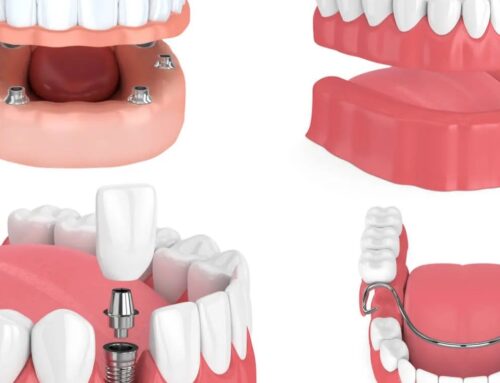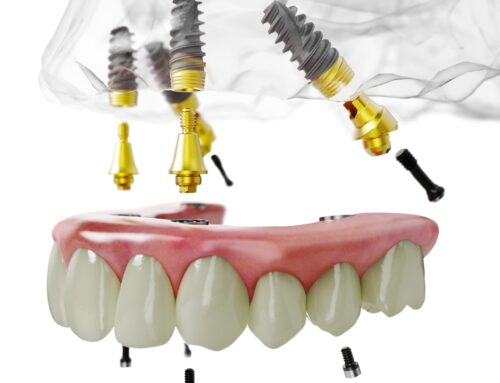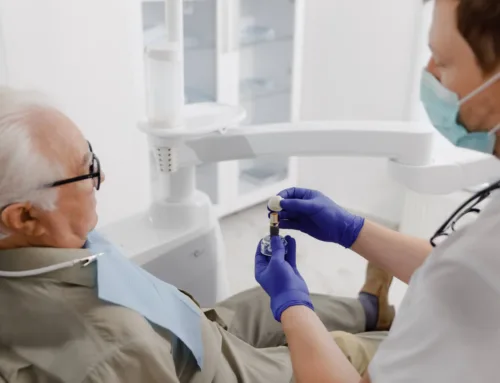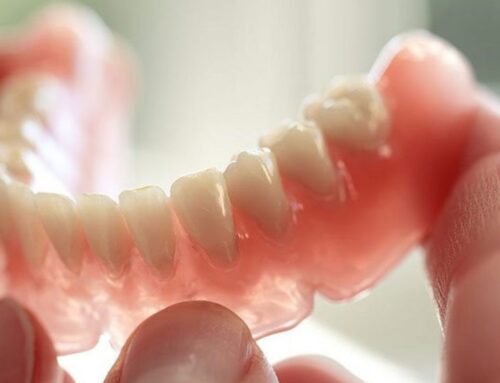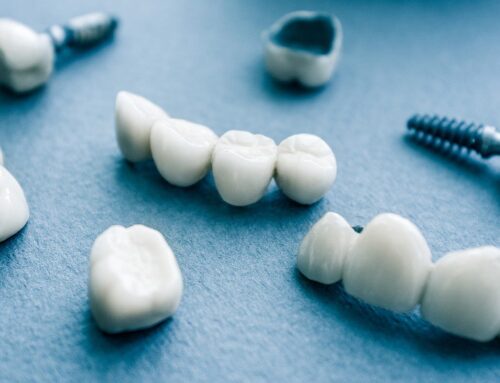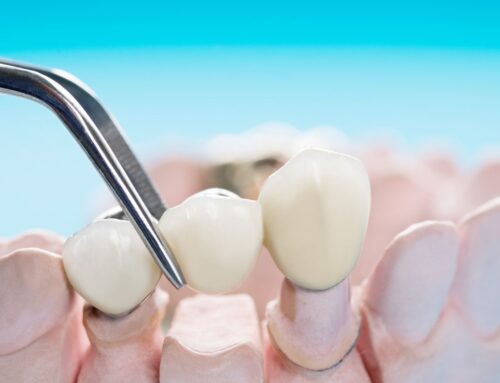The Complete Patient Guide to Dental Crown Procedures
When a tooth becomes damaged and the biting surface needs to be restored, your dentist may recommend a treatment method to repair the tooth known as dental crowns. This highly-effective tooth repair procedure is common, but many people are not always aware of exactly how it works, or what to expect.
Keeping our smiles in style and maintaining a strong and healthy mouth means promptly taking care of issues that may arise, and getting the professional attention needed to treat problems early so that they do not develop into potentially serious conditions in the future. In cases where a tooth becomes damaged to the point where the biting and chewing surfaces are adversely affected, then a special procedure known as a ‘dental crown’ is often used to fix the problem.
How Can Teeth Become Chipped, Cracked, Or Worn?
There are many reasons why a tooth may become damaged to the point where a professional repair is needed. For example, a sudden impact caused by a fall, sports incident, or other accident could chip a tooth, or create a crack in it. This is particularly likely if the tooth comes into contact with a very hard surface, such as due to a fall onto the ice of a hockey rink. In other cases, biting down hard on a metal utensil could produce a chip or crack in the outer enamel and inner dentin of the teeth.
Tooth grinding due to stress, anxiety, or misalignment in the jaw is another potential cause of damage to the biting surfaces of our teeth, as the frequent attrition wears down the enamel and alters the shape of the tooth itself. This type of damage can also occur from tooth decay that goes untreated for too long. As the decay progresses, it eats away at the healthy material of the tooth and creates weak spots, holes, and recesses.
Regardless of the root cause of the damage, the different methods used to repair the tooth are generally the same. Let’s review the various techniques that are designed to restore the integrity and structure of teeth that have been damaged.
What Are The Different Ways Teeth Can Be Repaired?
Fillings – Perhaps the most widely-known way to repair damaged teeth is with a filling. Most often this is used in the case of cavities where the damage is minor and not dramatically affecting the shape or function of the tooth. After preparing the tooth by removing the decaying material, an artificial tooth material is used to fill in the cavity and hardened to provide a virtually undetectable restoration of the tooth.
Bonding – If the damage is more extensive, such as with a larger chip or more pronounced crack in the tooth, dental bonding may be used. First, the tooth surface is prepared in the same fashion as a filling. Similar to the material used in fillings, dental bonding material is then sculpted to mimic the shape of the missing natural tooth material, at which point it is then cured and hardened to become permanent.
Dental Crowns – In situations where the extent of the damage is more severe and localized on the top surface of the tooth where bite contact occurs, a dental crown is usually the preferred method of repair. This is when the entire top portion of the tooth, known as the ‘crown’ is replaced with an artificial version.
What Is A Dental Crown?
The dental crown itself is essentially a ‘cap’ that can be made from a variety of different specialized materials, including metal, ceramic, porcelain, or resin, or a combination of these. Dental crowns are manufactured to be ultra-hard and durable, so that the patient can regain full function of their entire mouth. In addition, dental crown materials are colour-matched to mimic a wide variety of natural tooth shades so that the dentist can select the best match for the patient.
Dental crowns come in different lengths depending on what is required to perform the necessary restoration. If the remaining natural tooth is structurally sound enough, the dentist may opt for a lower-profile crown type known as a ¾ crown or overlay. These types of crowns won’t cover up quite as much of the remaining natural tooth as a full crown, which extends all the way down the tooth where it meets the gum line.
How Are Dental Crown Procedures Performed?
If a dental crown is determined to be the ideal treatment option to address a damaged tooth, the procedure itself is fairly straightforward. It begins with a thorough physical examination and x-rays to obtain a comprehensive view of the current state of dental health of the patient. If there are any other issues that need to be addressed prior to the dental crown procedure, your dentist will arrange for an appropriate treatment plan.
When the time comes for the procedure to be performed, the dentist will begin by obtaining a detailed mold of the tooth. This may also be done using advanced 3D dental imaging machines, which provide a digital rendering of the tooth right down to the smallest detail. Once the mold or 3D rendering is complete, the tooth will then be prepared for the next step of the treatment.
To prepare the tooth, it will be filed down and reduced to create a solid and stable base on which to securely affix the replacement crown. An impression will then be made of the tooth base, which is used to precisely shape the cavity in the replacement crown so that the fit is exact.
While the permanent replacement crown is formed in the dental lab using the molds, 3D renderings and impressions obtained earlier in the procedure , your dentist may provide you with a temporary crown so that your mouth will function normally in the interim. Once the final crown has been made, you will return to the dental office to have the temporary crown removed and the permanent version adhered to the tooth.
Some dentist offices have the ability to create the replacement crowns in their own in-house labs, allowing the dentist to perform the entire procedure in one day. In these cases, the temporary crown will not be necessary, as it will only take a couple of hours to finalize the creation of the permanent replacement crown. Once ready, the final crown will be placed on the tooth using a super-strong dental bonding adhesive that makes the new crown into a permanent repair.
Post-Procedure Care For Dental Crowns
After the procedure, your dentist may have some specific care guidelines to provide you depending on the unique aspects of your dental health. However, in most cases the care of a dental crown is not really very different from the care you provide to the rest of your natural teeth. Keeping your teeth healthy and strong is absolutely essential, as even though the crown itself is made of an artificial material, the base that it sits on is still your natural tooth. If the base tooth becomes weak, starts to decay, or your mouth starts to experience other issues, the strength and integrity of the repair may start to degrade over time.
This means after your dental crown procedure is completed, you’ll need to keep up with your oral health care at home and maintain a regular routine of proper toothbrushing technique, flossing, and use of antibacterial mouthwashes. Sticking to the recommended schedule of dental checkups is also very important so that your dentist can monitor the overall state of your dental health and spot any potential problems before they progress to more serious conditions.
What Else Should I Know About Dental Crowns?
While dental crowns are a very popular and common procedure, and an excellent way to address the problem of chipped and damaged teeth, there are some things to be aware of. Some patients experience a minor increase in tooth sensitivity to hot or cold temperatures, while others may find that they are more sensitive to pressure when biting down on that particular tooth.
In addition, while crowns are intended as a permanent restoration, there are too many external factors at play to guarantee exactly how long an individual patient’s crown will last before needing additional restoration or replacement. On average, most dental crowns will last for about 10 years.
Patients who frequently bite or chew on hard foods like nuts or seeds may experience a loosening of the crown if they don’t take the necessary care to avoid placing excessive force on the crown itself. On the other hand, patients who exercise a higher level of caution in this regard and maintain a thorough oral health care regimen may find that their crown lasts for many years past the average.
Restore Your Smile To Regain Self-Confidence & Restore Full Mouth Function
If you’ve experienced an accidental impact that left you with a chipped or cracked tooth, or perhaps a cavity has resulted in a bothersome indentation on the biting surface of one of your teeth, then now is the time to take action and repair the damage to restore your smile. A dental crown is a great way to fix these types of damaged tooth problems, regain your self-confidence, and get your mouth fully functional again.
Contact the team at Georgian Dental today to arrange for your next appointment and have all your questions answered by our expert dental professionals.
Appointment Request
If you’re interested in any of our procedures, and would like to meet with one of our dentists to discuss options, costs and get additional information, complete this short form and we’ll give you a call to arrange for a no-obligation appointment at our Barrie clinic.

